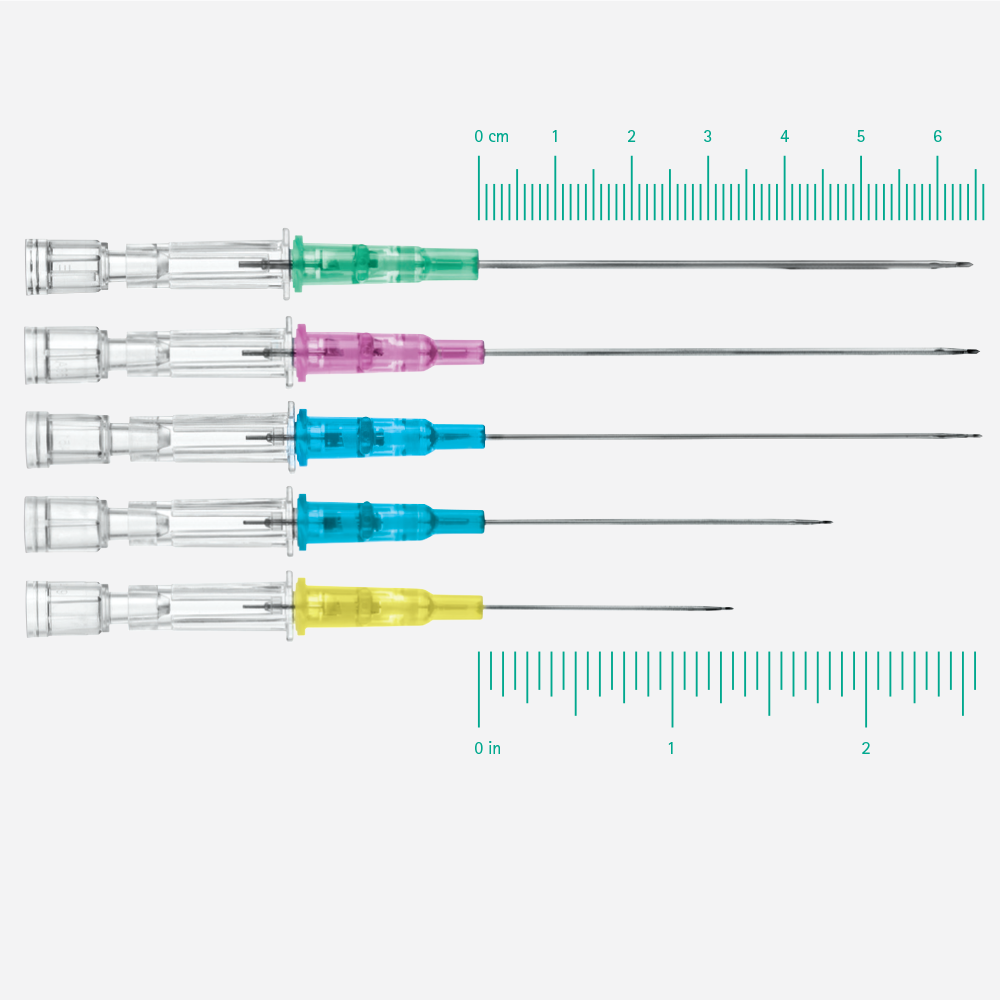No content results match your keyword.
Content
You have successfully logged out.
Introcan Safety Deep Access
Ultrasound guidance can increase first-stick success rates of peripheral vein cannulation.1 The practice provides nurses with additional visualisation of deeper peripheral veins. This practice is often used with difficult intravenous access or "DIVA" patients.

0%
of ultrasonographically guided IV catheters fail within 24 hours of placement1
0 days
median survival time of ultralong catheters1
0 cm
of the catheter in the vein increases dwell time1
Performing ultrasound guided peripheral IV insertions on difficult IV access patients can improve success rates, decrease time required to obtain access and improve patient satisfaction.2 However, ultrasound guided peripheral IV catheters have a dismal dwell time if there is not enough catheter length in the vein.1 The increased length of the catheter in the vein is strongly associated with enhanced survival.1 When less than 2.75 cm of the catheter is in the vein, there is a higher likelihood of catheter failure.1


In a recent study, it was observed that ultralong catheters of 2.5 inches (6.35 cm) had a significantly longer median survival time of 5.6 days compared with the 3.8 days for standard long catheters of 1.88 inches (4.78 cm).1 With a catheter length of 2.5 inches, Introcan Safety Deep Access is designed to be used to cannulate deeper veins under ultrasound guidance. The ultralong length of the catheters can provide higher levels of vein purchase which could correlate to first-stick success, higher survival rates, and longer dwell times.
Additional precautions can be taken to help extend the longevity of peripheral IV catheters. A 2012 study of 10 164 patients found that 70.7% of catheters in the nonstabilization device group needed to be replaced by 72 hours.3 Furthermore, the INS has been recommending the use of stabilization devices over the use of tape.4 However, effective dressing and securement should prevent many PIVC complications.5 The All-in-One Clik-FIX peripheral securement device is designed to replace the need to use individual tape, gauze, cushion and transparent dressing while prodiving securement to peripheral IVs.

1. Bahl, A. MD, MPH. et al. Ultralong Versus Standard Long Peripheral Intravenous Catheters: A Randomized Controlled Trial of Ultrasonographically Guided Catheter Survival. Annals of Emergency Medicine. (2020) https://doi.org/10.1016/j.annemergmed.2019.11.013
2. Moore MD, Christopher L., Ultrasound First, Second, and Last for Vascular Access, Journal of Ultrasound in Medicine, 2014 33:7. doi: 10.7863/ultra.33.7.1135, 1135-1142.
3. Helm, R. E. MD. et al. Accepted but Unacceptable: Peripheral IV Catheter Failure. The Art and Science of Infusion Nursing. (2015) https://doi.org/10.1097/NAN.0000000000000100
4. Gorski LA, Hadaway L, Hagle ME, Broadhurst D, Clare S, Kleidon T, Meyer BM, Nickel B, Rowley S, Sharpe E, Alexander M. Infusion Therapy Standards of Practice, 8th Edition. J Infus Nurs. 2021 Jan-Feb 01;44(1S Suppl 1):S1-S224. doi: 10.1097/NAN.0000000000000396. PMID: 33394637.
5. Rickard, C. M. Dressings and securements for the prevention of peripheral intravenous catheter failure in adults (SAVE): a pragmatic, randomised controlled, superioirity trial. The Lancet. 2018 Volume 392, Issue 10145, 4-10 August 2018. Pages 419-430.